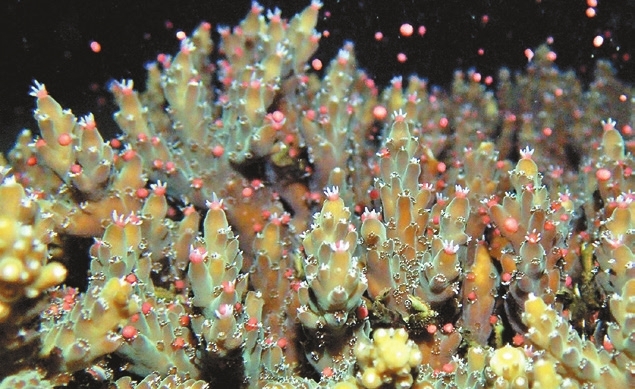
CORAL reefs are vital ecosystems that support a diverse range of marine life, playing host to various species including sponges, oysters, clams, crabs, and fish. They are interconnected with nearby habitats, forming a complex marine ecosystem. Approximately a quarter of all marine life, including fish, relies on coral reefs at some point in their life cycle. These reefs possess unique ecological functions, such as carbon storage, nutrient regulation, and support for marine species survival. They provide invaluable services to humanity, in aspects of fisheries, moderation of sea-level rise, and storm-surge attenuation. Coral reefs face numerous challenges and threats. Ocean heat waves with unprecedented temperatures pose a significant threat, harming the health and existence of corals and their communities. Coral bleaching, resulting from environmental stress, impacts not only individual corals but also affects adjacent corals. The presence of microorganisms such as Terpios contributes to the spread of bleaching, further damaging coral life. These factors collectively reduce coral reef functionality and can lead to habitat disintegration within a short period. This year, high sea-surface temperatures have resulted in massive coral losses globally. These temperatures also negatively impact coral fitness and survival in the long term by increasing water depth. In the Shenzhen part of Mirs Bay, the development of coral reefs is inadequate, with sparse formations that are difficult to observe. This is attributed to local bioclimatic factors and chronic stress over time. The health of the coral ecosystem remains uncertain, but it is evident that corals in the region are far from optimal. Efforts are underway to map the potential for reef reconstruction and to raise awareness to the deteriorating ecosystem. A comparison between healthy corals in Okinawa, Japan, and in Mirs Bay reveals stark differences. Healthy reefs consist of diverse patches that provide habitat for various species, while unhealthy reefs are characterized by encrusted biofilm and an abundance of algae. The soundscape of healthy reefs is diverse, contributing to a symphony of marine life, while degraded reefs have lower diversity and fewer fish species. These degraded habitats can even disorient large cetaceans like whales. Understanding the connection between recent Bryde’s whale strandings in the Mirs Bay and the state of coastal coral gardens is essential. Eco-unfriendly practices disrupt the food web, impacting large cetaceans and altering their migration patterns. High nutrient levels and artificial lighting may have lured the whales closer to the coast, while anthropogenic sounds and boats may have disoriented them, contributing to their demise. As the beautiful coral reefs hold immense value and have an essential role in sustaining global ecosystems, protecting them is crucial. Recognizing their importance allows us to strive for their continuity and resilience for future generations.(Matteo Convertino) | 
